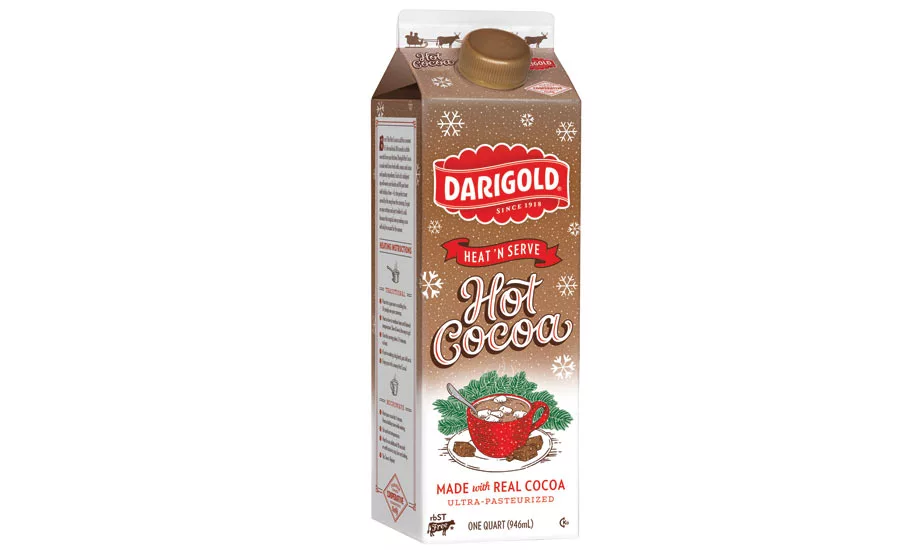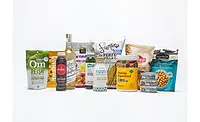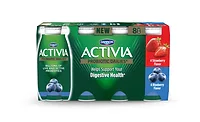Almond, coconut milks drive dairy, alternatives growth
Yogurt, smoothie, lactose-free dairy beverages growing





Similar to many beverage categories today, dairy and dairy alternative beverages have experienced the impact of clean-label and health-and-wellness trends. As these trends proliferate, experts note that the overall dairy market has experienced slight declines; however, several segments within it are driving growth.
“The milk category as a whole declined 2.6 percent in the 52 weeks ending August 26, 2017,” says Jordan Rost, vice president of consumer insights at New York-based Nielsen. “However, in looking across varieties, we see that specialty milks (including lactose-free varieties) and milk substitutes are the only sub-categories driving growth, with dollar sales up 11.9 percent and 2.7 percent, respectively. Dollar sales of regular white milk declined 4.8 percent, and even for its better-for-you counterpart, organic white milk, dollar sales were also down 2.9 percent.”
Although the category is challenged by deflationary pressures, clean labels and transparency could be essential for building brand equity in the market, Rost says.
“The entire dairy department continues to face deflationary pressures, meaning that with falling prices, the competition for consumers’ dollars is more important than ever,” he explains. “Product promotions aren’t the only means to drive sales, and over-reliance on this can often exacerbate price sensitivity. That said, dairy beverage manufacturers will need to identify innovative and creative ways to capture consumers’ attention and demonstrate the value in their brands. For example, commitments to transparent labeling can have strong impacts on brand equity.”
In its “DMI Quarterly Retail Snapshot: Milk Q2 2017,” which includes data for the 26-week period ending June 25, 2017, Chicago-based Information Resources Inc. (IRI) notes that white gallon milk, the volume leader in the category, is driving the overall declines. However, the IRI overview notes that there are a handful of growth areas in the market, despite the declines seen elsewhere.
Among these bright spots, lactose-free and flavored varieties are both experiencing growth, up 11.5 percent and 4.2 percent, respectively, the IRI overview reports. With an increase of 21.9 percent, niche value-added milk products also are a growing segment, it adds.
Nielsen’s Rost notes that drinkable yogurts are another dairy drink segment showing growth. “Drinkable yogurts are gaining popularity of consumers as well,” he says. “Though they account for just 11 percent of total yogurt dollars, the category generated $813 million in U.S. retail stores, up 13.9 percent compared to the previous year.”
As part of this growth, dairy drinks producers are launching innovative, better-for-you options into the marketplace. Among them, Pavo, Ga.-based Dreaming Cow Creamery introduced a line of products called LUSH. The product line is a nutrient-dense, grass-fed and 100 percent pasture-raised yogurt drink that blends fruits with a full serving of vegetables and more than 20 billion colony-forming units of clinically proven probiotics, the company says. A full-fat yogurt drink, LUSH also boasts antioxidants and vitamins and minerals.
Additionally, milk shakes are showing potential, with strong performance during the past four years, according to Nielsen’s Rost. “In the latest year, the category has seen [increases of] 7.4 percent in dollar sales, driven largely by strawberry flavored variants, which are up 17.6 percent versus a year ago. Perhaps due to today’s wide array of drinkable meal supplements, smoothies and the like, these filling and indulgent dairy drinks cater to the needs of convenience-minded consumers,” he says.
Plant-based growth
Although the traditional dairy category is experiencing challenges, plant-based dairy-alternatives segments continue to grow, but at a decelerated pace, notes IRI’s overview. It states that alternative dairy beverages are growing more moderately, at 1.7 percent year-to-date.
Consumers’ shifting diet habits and healthy preferences have played a significant role in the growth of the plant-based dairy alternatives segment and the role that almond and coconut milks, in particular, have played in it, Nielsen’s Rost says.
“Consumers are flocking to varieties that they deem are most healthful for their diet and preferences, with non-dairy milk substitutes growing in popularity,” he explains. “Almond milk has been growing significantly over the past five years, up 7.4 percent in the latest period. However, another milk substitute has started to pick up steam: coconut milk. Though coconut milk only represents 4.9 percent dollar share of the total milk substitute category, its dollars grew 8.5 percent in the last 52 weeks.”
According to IRI’s quarterly overview, the non-dairy alternative segment makes up 6.5 percent of total dairy and non-dairy volume, year-to-date. Almond milk leads the market with 72 percent volume share, an increase of 6.4 percent. Once the dominant non-dairy alternative, soy milk is a distant second, with 14.8 percent volume share, a decline of 14.6 percent. The No. 3 dairy-alternative milk, coconut milk, maintains 6.9 percent volume share, an increase of 4.9 percent, year-to-date, IRI reports.
In line with this trend, Los Angeles-based Califia Farms LLC introduced Homestyle Organic Nutmilks earlier this year. The USDA Certified Organic dairy-alternative beverages are offered in three varieties: Almond, Cashew and Coconut. The products feature clean labels with just four ingredients: organic nuts, water, oat fiber and a dash of sea salt — appealing to another dominant trend in the market: clean label.
The consumer demand for clean-label products has played a significant role in the growth of these types of dairy alternatives, says Andrew Mandzy, director of strategic health and wellness insights at Nielsen.
“Clean label is a driver of growth in the alternative dairy beverage market. In fact, 82 percent of all alternative dairy beverages are considered clean, which means they don’t contain any artificial ingredients or undesirable ingredients,” he explains. “This shift to cleaner products is similar to what we are seeing across food and beverage in general. Consumers want to know what is in their products, and 68 percent of consumers say they are actually willing to pay more for foods and beverages that do not contain undesirable ingredients.
“In addition, we are seeing a shift to plant-based foods as a more important part of consumer diets. The share of foods and beverages that meet a plant-based diet is growing, and the dairy beverage category is a beneficiary of that broader consumer trend,” Mandzy continues. “Thirty-nine percent of consumers stated that they are looking to increase their consumption of plant-based products as they focus on eating and drinking cleaner foods and beverages and seek healthier options across the store.”
In line with this, an infographic from Rockville, Md.-based Packaged Facts titled “Consumer Trends: Milk & Dairy Milk Alternatives,” highlights that consumers of dairy alternatives are more perceptive to clean and clear labeling.
“The percentage of consumers who especially seek out natural and organic products when grocery shopping is noticeably higher among milk-alternative drinkers (43 percent) compared to either whole milk drinkers (29 percent) or skim milk drinkers (34 percent),” the infographic states.
Going forward, Mandzy says that clean-label trends will continue to influence both the dairy and dairy-alternatives markets. “We think that the trend toward cleaner foods and beverages will continue,” he says. “Retailers across all channels are focused on product transparency as consumers look for the brands that meet their needs. The shift will continue to impact the dairy beverage category as well, as consumers look for plant-based and clean products. This is a fascinating time to see health, wellness and product transparency impact consumer decision-making across the entire store.”
Looking for a reprint of this article?
From high-res PDFs to custom plaques, order your copy today!





